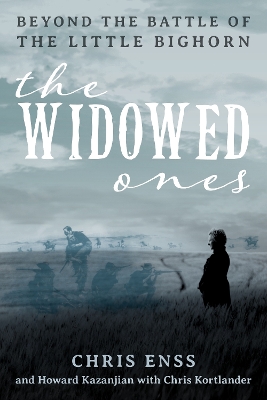History has a way of bestowing a more lasting immortality on important people who die at the height of their earthly achievements. Famous personalities who are cut down at the height of their fame leave people clamoring to know more about them. Books and songs are written about them. Pictorial mementoes and keepsakes are in demand. The celebrated military figure General George Armstrong Custer, whose life ended so abruptly, is no exception. Interest in him, and those associated with him, has never diminished with the passing time. Elizabeth Bacon Custer, George’s faithful wife, and more than two dozen women who lost their husbands at the Battle of Little Big Horn, fall into that category.
Elizabeth Bacon Custer set the social tone at Fort Lincoln, Nebraska, where she and twenty-five other women were living when their spouses perished in June 1876. She helped the ladies deal with the difficulties of life on the Plains; how to handle frostbite, how to treat heat prostration due to the suffocating amount of clothing, how to obtain water through holes cut in the ice of lakes or rivers, and how best to entertain themselves while waiting for their husbands to return from a campaign.
When a soldier left the fort, his wife never knew if he would return. Eliza Porter, wife of 1st Lieutenant Colonel I. Porter of Custer’s 7th Cavalry, described the last get-together Elizabeth Custer hosted for the officers and their families this way. “Here are those nice fellows gathered around the Custer’s table, all discussing the situation and all knowing they will never all come back. One leaves his watch and little fixings and says, ‘if one of those bullets gets me, send this to my wife waiting for me in Independence.’
One need not search any further to unearth the reason why “Boots and Saddles,” the call to battle written by Elizabeth Custer, struck terror into the hearts of Army wives. Each wondered if she would be widowed or if the role of widowhood would be forced upon her friends. After the men were assembled, they rode out proudly to the strains of “The Girl I Left Behind Me.”
In order to hide their tears and anxiety from their husbands, many wives did as Elizabeth Porter did; they refused to watch the column’s ride away from the fort. They preferred to say goodbye behind closed doors. Fear and weeping were private.
Nine months after the massacre at Custer’s Last Stand, Elizabeth Custer scheduled a reunion with the widows of the Little Big Horn. On June 25, 1887, the women met in Monroe, Michigan, to reflect on the events leading up to the battle, remember the loved ones that were killed, and share how they have been able to go on.
The widows got together every year for more than twenty years. In between reunions they corresponded with each other, exchanged photographs, and supported one another through the difficult times.
The never-before-seen materials that will be used to write the book entitled Elizabeth Custer and the Widows of the Little Big Horn will be provided by the curators of the Elizabeth Custer Library and Museum at Garryowen, Montana; an example of some of the historical materials that will be provided include letters between Elizabeth Custer and the other widows, letters to and from politicians and the widows supporting and criticizing General Custer, and agendas and pictures of the widows at the annual meetings.
There have been many books written about General George Custer and a handful have been penned about Elizabeth Bacon Custer, but there have been nothing written about the widows of the Last Stand. This will be a first.
- ISBN10 1493045946
- ISBN13 9781493045945
- Publish Date 15 August 2022 (first published 1 June 2022)
- Publish Status Forthcoming
- Publish Country US
- Publisher Rowman & Littlefield
- Imprint TwoDot Books
- Format Hardcover
- Pages 208
- Language English
